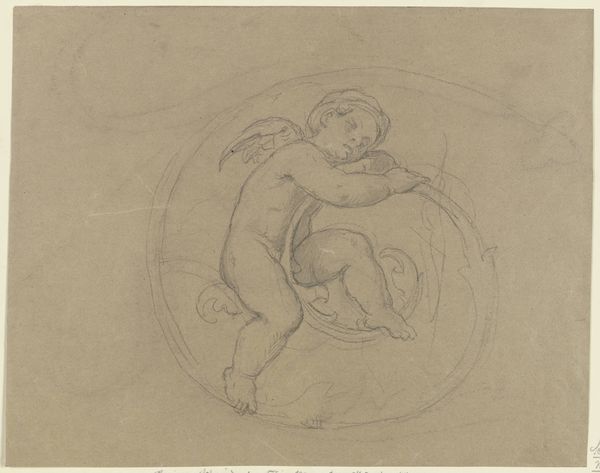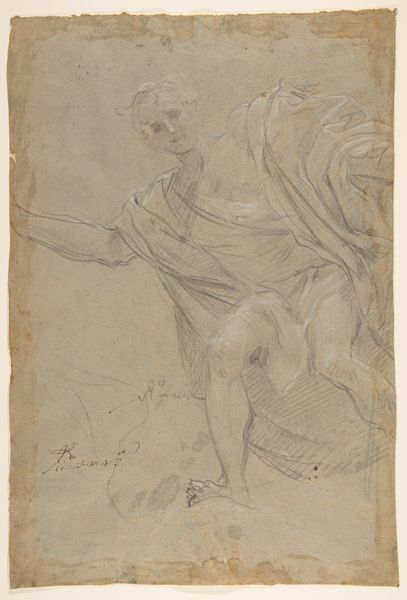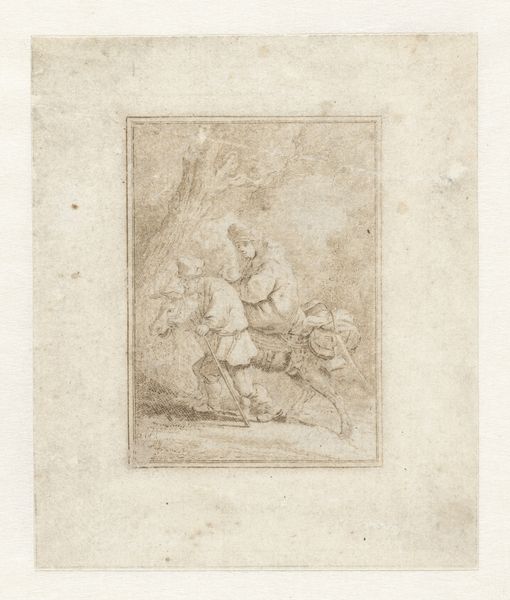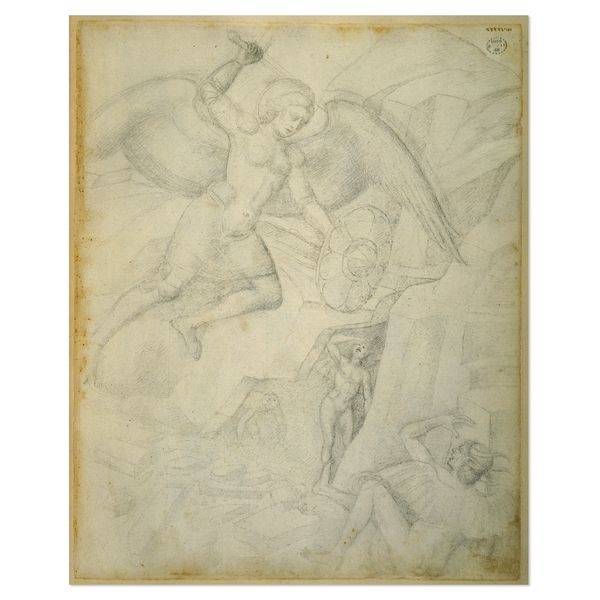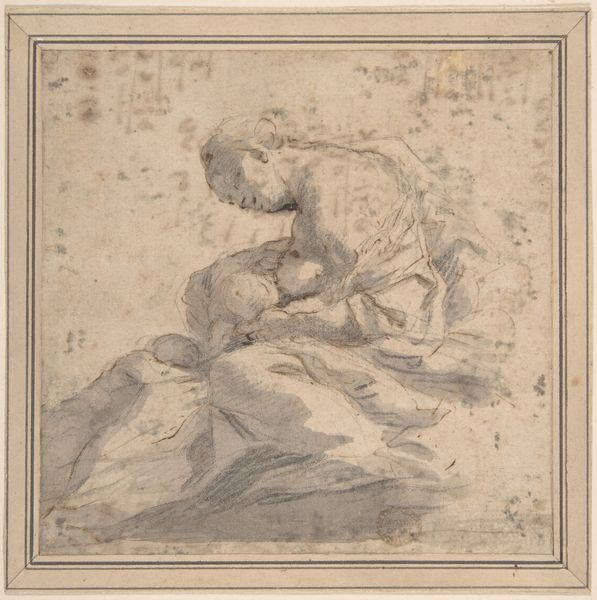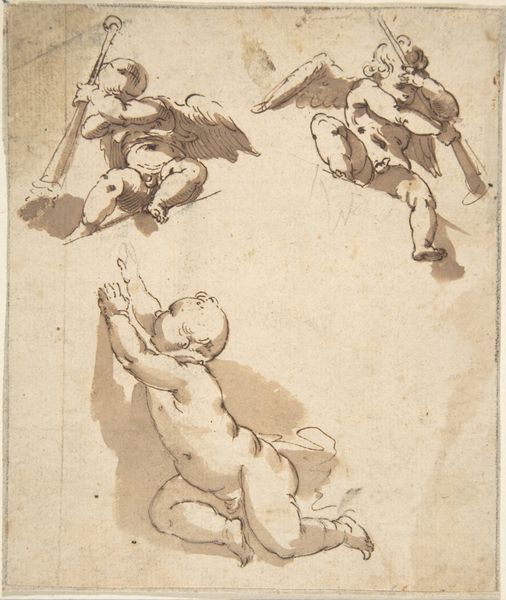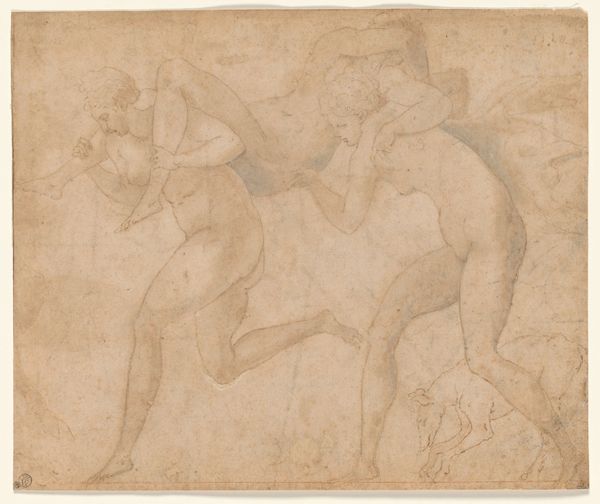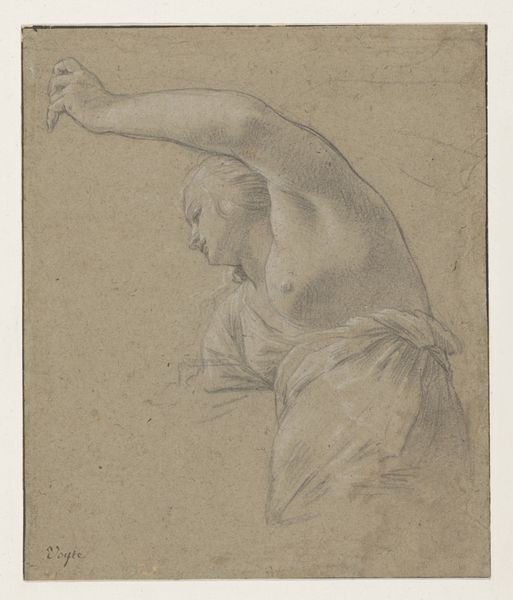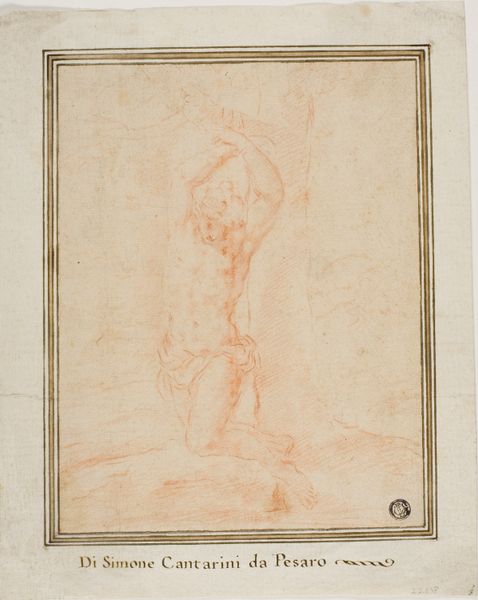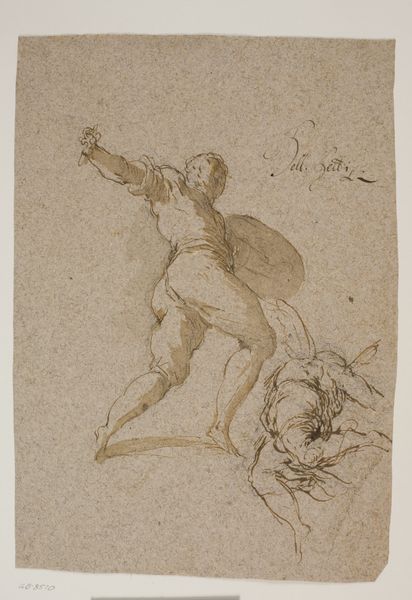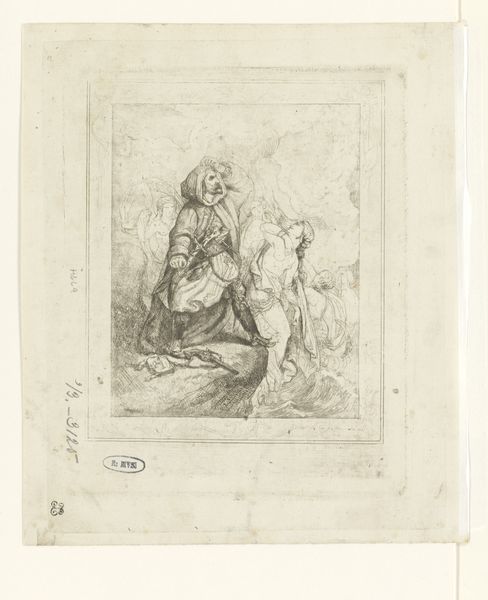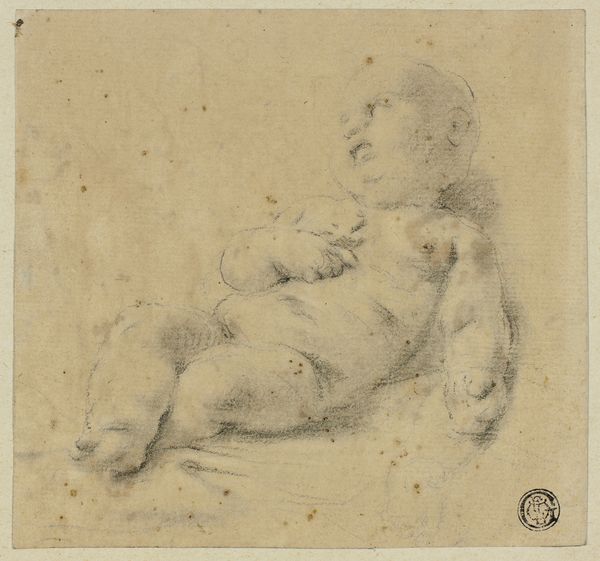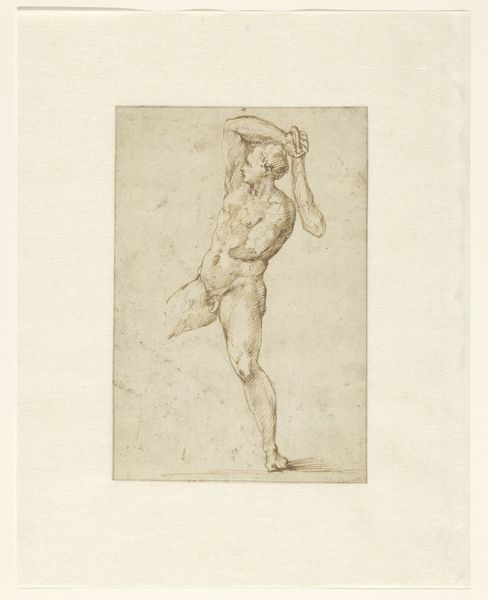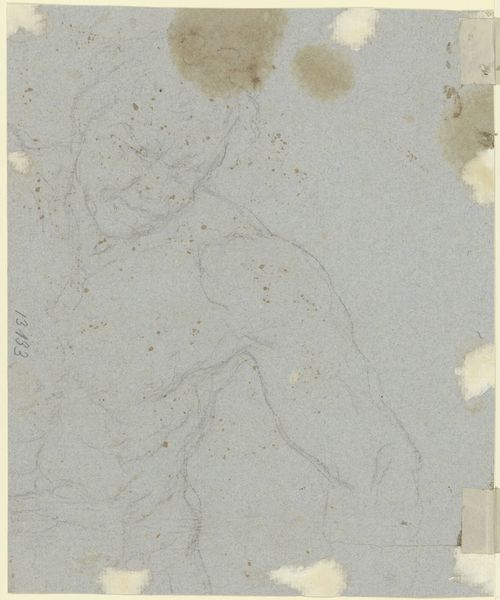
drawing
#
portrait
#
drawing
#
figuration
#
11_renaissance
#
history-painting
#
academic-art
#
italian-renaissance
Dimensions: 8 11/16 × 9 1/16 in. (22 × 23 cm) (sheet)12 3/16 × 12 11/16 in. (31 × 32.3 cm) (mount)23 3/4 × 19 3/4 in. (60.33 × 50.17 cm) (outer frame)
Copyright: Public Domain
Curator: Here we have "Study of Putti" created circa 1598-1602 by Annibale Carracci, an exquisite drawing housed right here at the Minneapolis Institute of Art. Editor: It strikes me as rather odd. The cherubic figures seem so robust, almost bordering on awkward, definitely not the idealized image we often associate with Renaissance art. Curator: Well, that “awkwardness” is key. Carracci, during the Italian Renaissance, was grappling with the prevailing academic art style. He, and others like him, strived for naturalism. Editor: I suppose seeing the putti drawn so realistically makes you question the myth that surrounds them. These weren’t divine beings, simply studies from life—young children perhaps? Curator: Precisely! This wasn’t just an exercise in capturing forms but an inquiry into the very idea of idealized beauty. These putti—traditionally symbols of innocence and divine love—become much more human. This particular drawing might have been a preparatory sketch for a larger historical painting. Carracci often integrated these cherubic figures into grand allegorical compositions, placing the traditionally playful forms within history painting contexts. Editor: I find that dynamic interesting, as that really changes the power structures around the work, and by doing so perhaps it forces the viewer to also change theirs when looking at the piece. Do you see the role of museums and galleries in either reifying or breaking down some of those academic approaches in art and art history? Curator: Absolutely, we are active agents in the transmission of knowledge. We contextualize, analyze, and, in doing so, encourage the continual reassessment of accepted wisdom about art and the society from which the work emerged. The museum setting transforms Carracci’s sketch from an artist's preparation into a critical document on Renaissance ideas of childhood, beauty, and even class. Editor: It really speaks to how much an artist's vision challenges the narratives embedded in art history. The contrast between our expectations of cherubic innocence and these slightly ungainly children provokes such thought. Curator: It shows us how an artist working centuries ago can still prompt reflection and re-evaluation of our present-day expectations around figuration, which can sometimes box the artist, subject, and viewer.
Comments
minneapolisinstituteofart over 1 year ago
⋮
An extraordinarily gifted draftsman, Annibale Carracci was the youngest and most successful Member of the famous Carracci workshop. An early biographer remarked that every movement, gesture, and act compelled the Carracci to draw. Whether walking about, talking, drinking, or eating, “they would sketch, with bread in one hand and a pencil or charcoal in the other.” The large putto in this study, his left arm pulling on drapery, may represent a discarded idea for the baby frolicking in the bed curtains in Annibale’s painting "Sleeping Venus." The artist probably drew him in a matter of minutes, firmly modeling his chubby form, subtly foreshortening his pose (as seen from below), and giving the figure a quiet, childlike movement. The two lightly scribbled infants, likely sketched in just seconds, capture Annibale’s first, searching thoughts for two other infants.
Join the conversation
Join millions of artists and users on Artera today and experience the ultimate creative platform.
